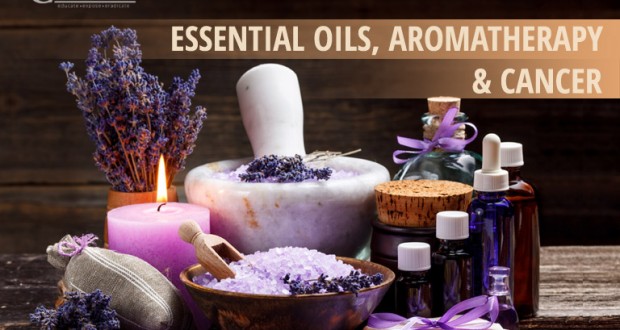|
Reprinted by Permission - CancerTruth.net by Ty Bollinger Essential oils have been around since the beginning of time. Throughout history, essential oils were used to cure diseases, relieve symptoms, and help people feel better after long illnesses. They are natural aromatic compounds found in the seeds, bark, stems, roots, flowers, and other parts of plants and have amazing medicinal properties. However, when some people think of essential oils, they may turn up their nose. Due to the Flexner Report of 1910 and the alliance between “Big Business” and the AMA, no longer are oils a crucial part of the medical curriculum. As medicine continues to focus on drugs, prescribing a “pill for every ill,” proven remedies and traditions are falling by the wayside, and essential oils have lost some of their popularity. Cancer patients have started a new resurgence in essential oils. Through aromatherapy, many cancer patients have found relief from the dire effects of chemotherapy and those caused by their illness. They utilize aromatherapy techniques during their recovery. And as you’ll see at the end of the article, they may even use essential oil as a treatment. What is Aromatherapy? Aromatherapy is a natural modality that can help patients cope with chronic pain, nausea, stress, and depression. It also has been used to stimulate the immune system, fight off bacterial infections, increase circulation, alleviate headaches, soothe sore muscles, and help you sleep at night. Each oil is promoted to have specific health benefits, so patients must find the right oils for their health concerns. Common essential oils used in aromatherapy and their health benefits include:
How is Aromatherapy Used to Help Patients Recover from Cancer? Aromatherapy can be self-administered or administered by a professional. Many aroma therapists found in the United States are also massage therapists, psychologists, chiropractors, or social workers. They may use the oils in their practices to help relieve some of their patients’ pain and enhance their quality of life. In the United States, you can buy the oils and a home diffuser yourself in order to self-administer your aromatherapy treatments. Essential oils can be used individually or combined for maximum benefits. Everyone has a unique body chemistry, so different oils may work differently on unique individuals. For this reason, aromatherapy may take time to improve your symptoms. You may need to try numerous oils and oil combinations before finding an oil or a combination of oils that truly works for you. Once you find the right oils, they can be applied to your skin or inhaled. For inhalation purposes, a home diffuser can be purchased. A home diffuser utilizes water to humidify your home and add essential oils to your environment. You may also add a few drops of essential oils to a steaming pot of water or to your shower each day in order to vaporize the oils and inhale them. If essential oils are applied directly to your skin, then they may need to be applied along with a carrier oil. Olive oil and coconut oil are both great carrier oils that can soak up the essential oils and help your body to absorb them properly. You can also make your own creams or salves that contain essential oils to use on your sore muscles or any areas of your body that are painful. What About Frankincense? This article wouldn’t be complete without mentioning frankincense, which is an oleo gum resin from Boswellia trees, of which there are over 25 species. Arabs called the milky sap of the Boswellia tree “al lubn” meaning “milk.” Al lubn became anglicized to olibanum, which is another name for frankincense. When burned, frankincense produces a brilliant flame and produces a pleasant aroma. For over 5,000 years frankincense (aka “boswellia serrata”) has been used to support the immune system, fight infection and cure diseases. Yes, even cancer! The oleo gum resin of frankincense contains four major pentacyclic triterpenic acids, referred to as boswellic acids. Studies have shown that boswellic acids have an anti-inflammatory action much like conventional non-steroidal anti-inflammatory drugs (NSAIDS). This being so, they have been found to be highly effective in such conditions as rheumatoid arthritis, osteoarthritis, colitis, Crohn’s disease, and asthma. Recently, a few studies showed that boswellic acids may have anti-cancer effect on leukemia and brain tumors. Researchers at Virginia Tech’s college of veterinary medicine recently discovered that frankincense is effective at treating skin cancer in horses. Frankincense is “carrier oil” in that it penetrates membranes and cell walls. It is one of the few substances known to cross the blood barrier. A cancerous cell wall loses its ability to transfer substances across the membrane. Therefore, not all herbs or medications can effect a cancerous cell. However, “carrier” agents like frankincense, DMSO, and very alkaline minerals like cesium are highly penetrable across the membranes and have the opportunity to act on a cancerous cell or a brain tissue that is separated by the blood brain barrier. A 2013 study by University of Leicester researchers indicated that frankincense contains a compound AKBA (acetyl-11-keto-beta-boswellic acid) that targets cancer cells, including ovarian,brain, breast, colon, pancreatic, prostate, and stomach cancers. According to researchers out of Baylor University Medical Center in Dallas, frankincense helps regulate the cellular epigenetic machinery, which highlights its ability to influence genes to promote healing. As you can see, the uses of frankincense are so numerous that it can accurately be described as a panacea, used for everything from colds to cancers. The general functions of frankincense resin and essential oil can therefore be described as immune-enhancing; antibiotic, antifungal, antiviral, and antiseptic. And as we have seen, frankincense also heals wounds and has distinct anti-inflammatory properties. - See more at: http://www.cancertruth.net/2015-march-newsletter/#sthash.LAtC1Dw9.dpuf
0 Comments
Your comment will be posted after it is approved.
Leave a Reply. |
Archives
May 2022
|

 RSS Feed
RSS Feed